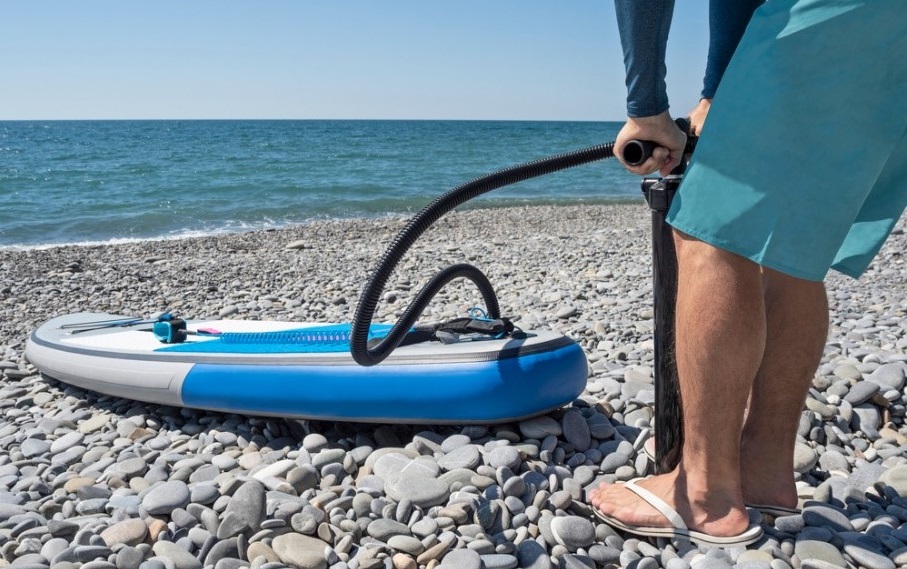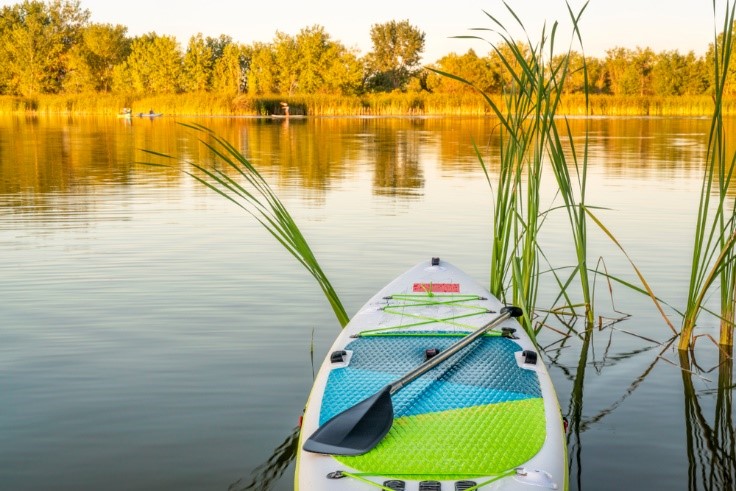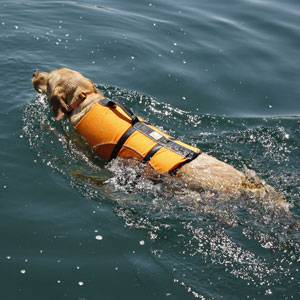Because you have an inflatable paddleboard, you must learn how to inflate paddleboard before you can head out onto the water.
To help you learn how to inflate a paddleboard, we’ve created a simple guide to show you how.

Table of Contents
How to Inflate a Paddleboard
Most inflatable SUP board owners will inflate their paddleboard after arriving at their destination because it’s easier to transport the board when it’s deflated. Most beginners will start inflating their boards using a hand pump, but as they get used to the process, they will upgrade to a SUP electric pump. Using a hand pump over an electric pump takes a lot of time and energy.
Here’s how to inflate your paddleboard:
- Remove your inflatable paddle board from its bag and unroll it completely. Before inflating the board, make sure that the valve’s yellow pin is in the upright position. This will ensure that the valve is closed completely and prevent air from coming out when you’re done pumping.
- Most inflatable paddleboards will require a 7/8th Halkey Roberts valve adapter. If you’re choosing to use an electric SUP pump, make sure to set the PSI gauge to 12 PSI.
- Insert and twist the hose into the valve to start pumping if you’re using a hand pump. The PSI gauge won’t read until the pump reaches 7 PSI. Pumping your inflatable paddleboard should take about 10 minutes.
- Once your board gets close to fully inflated, remove the cap on your hand pump to make inflating the board easier.
- Keep pumping until your board reaches the recommended 12 PSI.
- Twist off the pump’s hose from the air valve on your board.
- Replace the valve cap on your paddleboard, and you’re all set.
How to Deflate a Paddleboard
When deflating your inflatable SUP, make sure you don’t use the valve wrench. This can cause serious injury if you don’t use it correctly.
- Before you start deflating your paddleboard, wash it off with fresh water and let it completely dry.
- Take the valve cap off and push down the yellow pin to deflate the board. Once the air starts coming out of the board, twist the yellow pin to lock it in the open position.
- When most of the air has been released, it’s time to start rolling up your paddleboard. It’s highly recommended that you start rolling your inflatable paddleboard from nose to tail so that all of the air will leave your board. It is best to keep the fins on the outside as you roll the board up.
- Once the board is rolled up, take your straps and start strapping your board tightly
- When it is fully bundled up, you can put your inflatable paddleboard back into your bag.

How Long Can an Inflatable SUP Board Stay Inflated?
Say you don’t want to deflate your stand up paddle board. How long can it stay inflated without ruining the board? To protect your board from being destroyed, you shouldn’t keep it inflated for more than a couple of days.
If you know that you’re going to be paddling almost every day, there’s no reason that you should inflate and deflate each day because it can prove to be a huge waste of time.
However, if you aren’t paddling frequently, you should deflate your paddleboard. At least get 20 percent of the air out of the board, then keep it somewhere safe and out of the elements, including from sunlight.
Can You Paddleboard with a Dog?
Theoretically, you can take your dog with you on an inflatable paddleboard. However, if it will be their first time, you should first train them on a traditional paddleboard. This is because your dog can get scared and pop the inflatable paddleboard while you’re in the water.
Once trained on a traditional board, you can then make the switch to an inflatable paddleboard when your dog has adjusted to SUP riding.
How Do You Store Your Inflatable Paddleboard in the Winter?
To store your inflatable paddleboard in the winter, you can deflate it. However, don’t roll up your board and store it in your carrying bag all winter. The cold weather can cause crease and fold marks that won’t go away.


